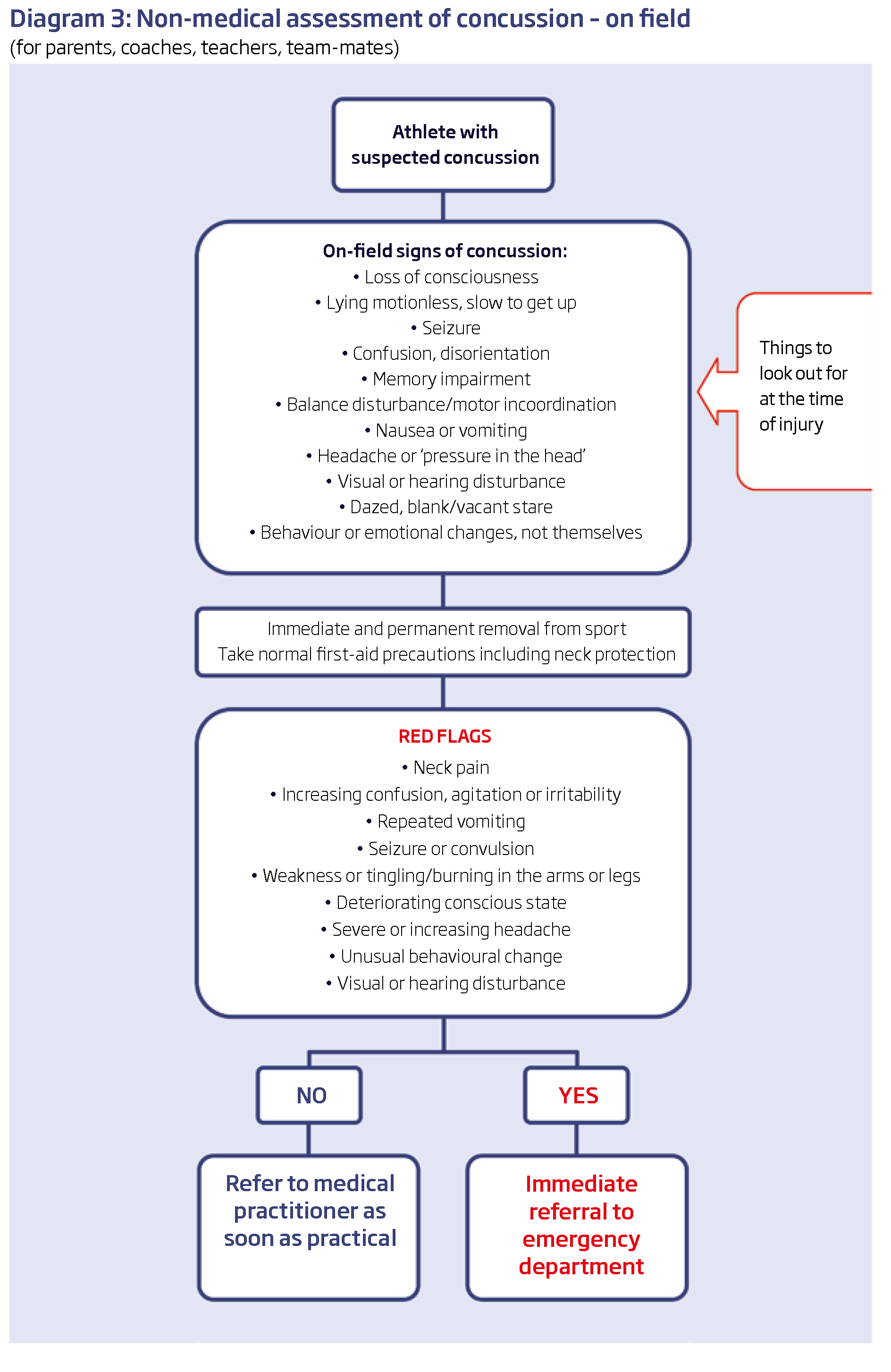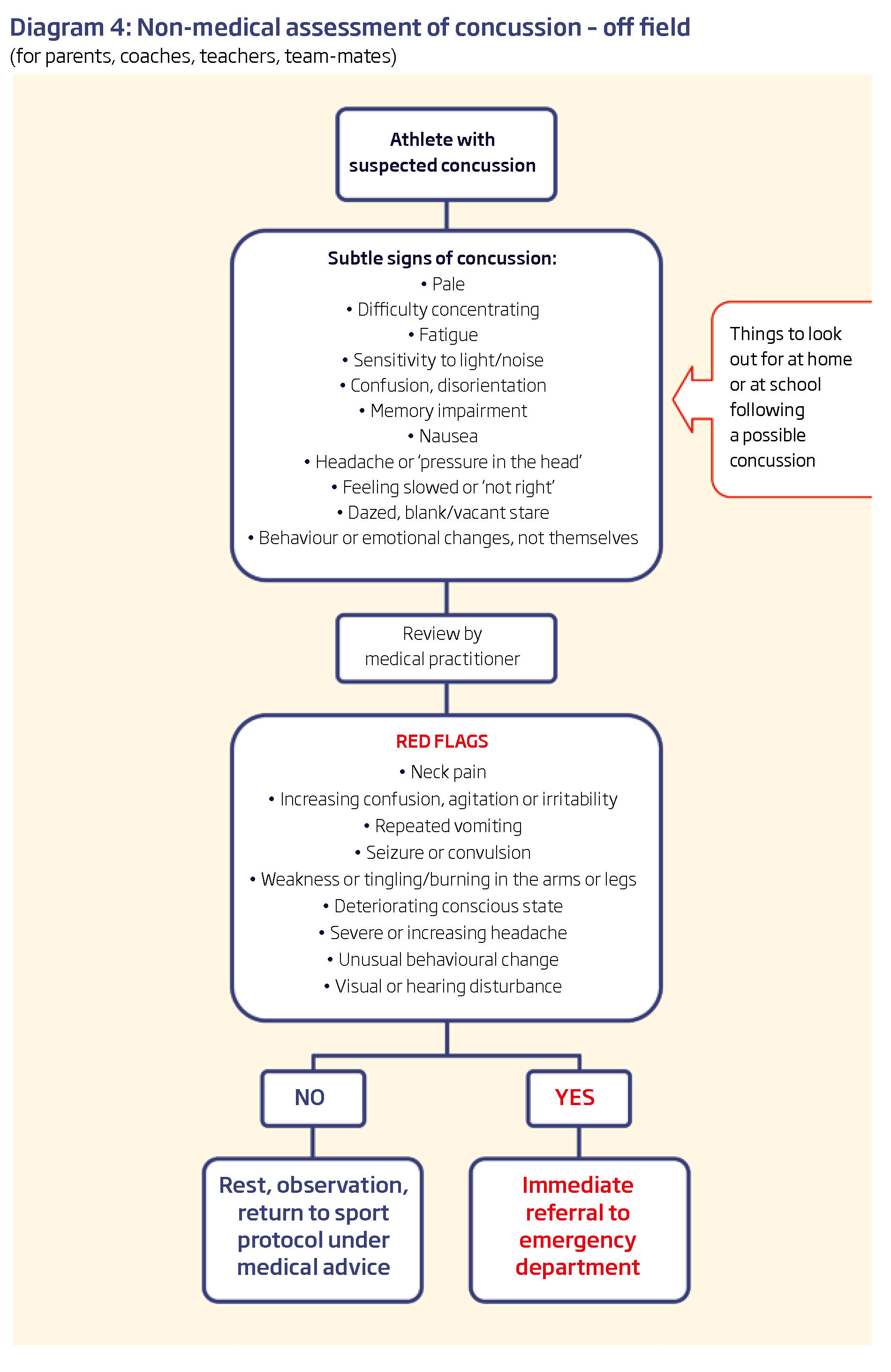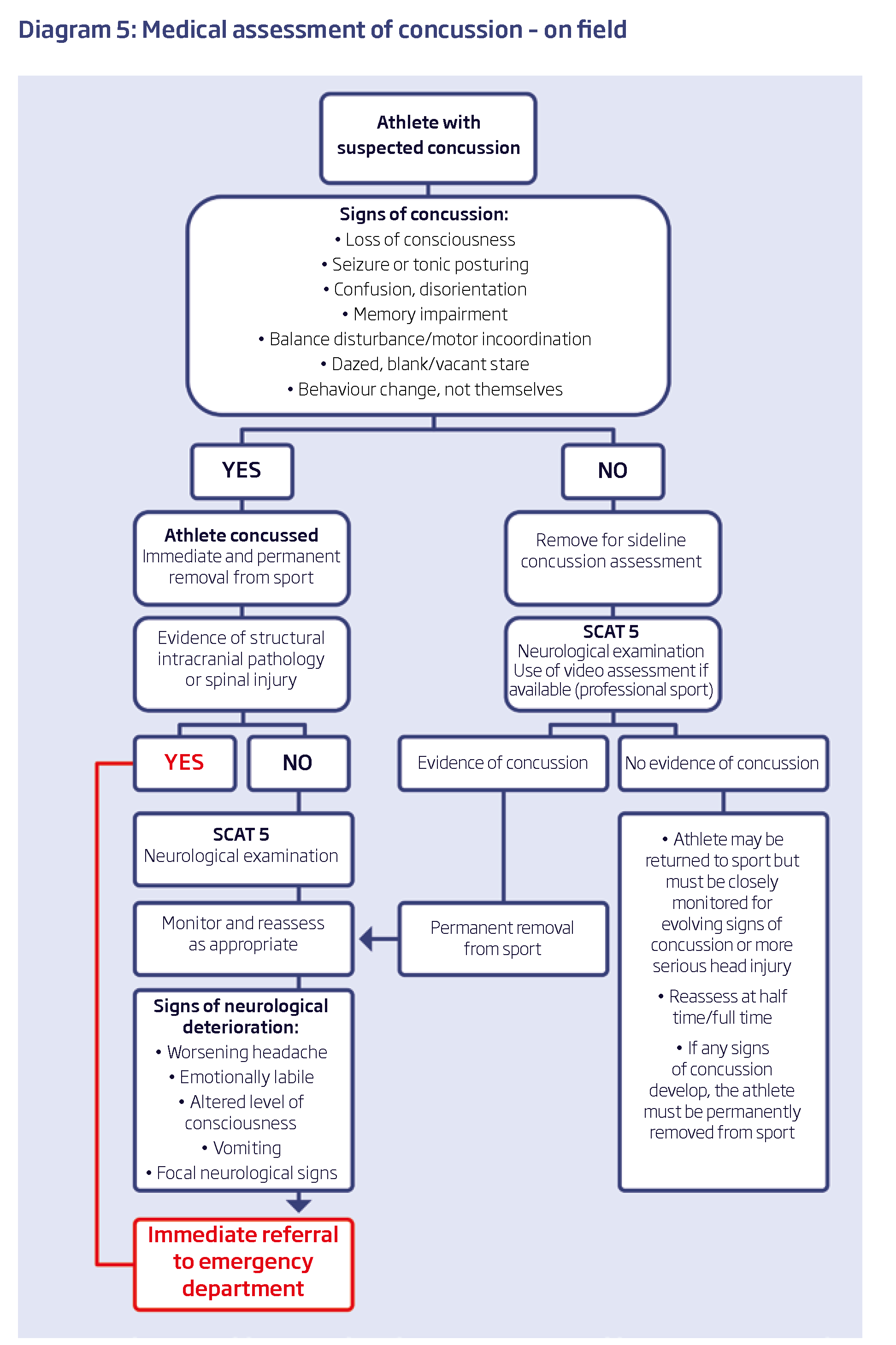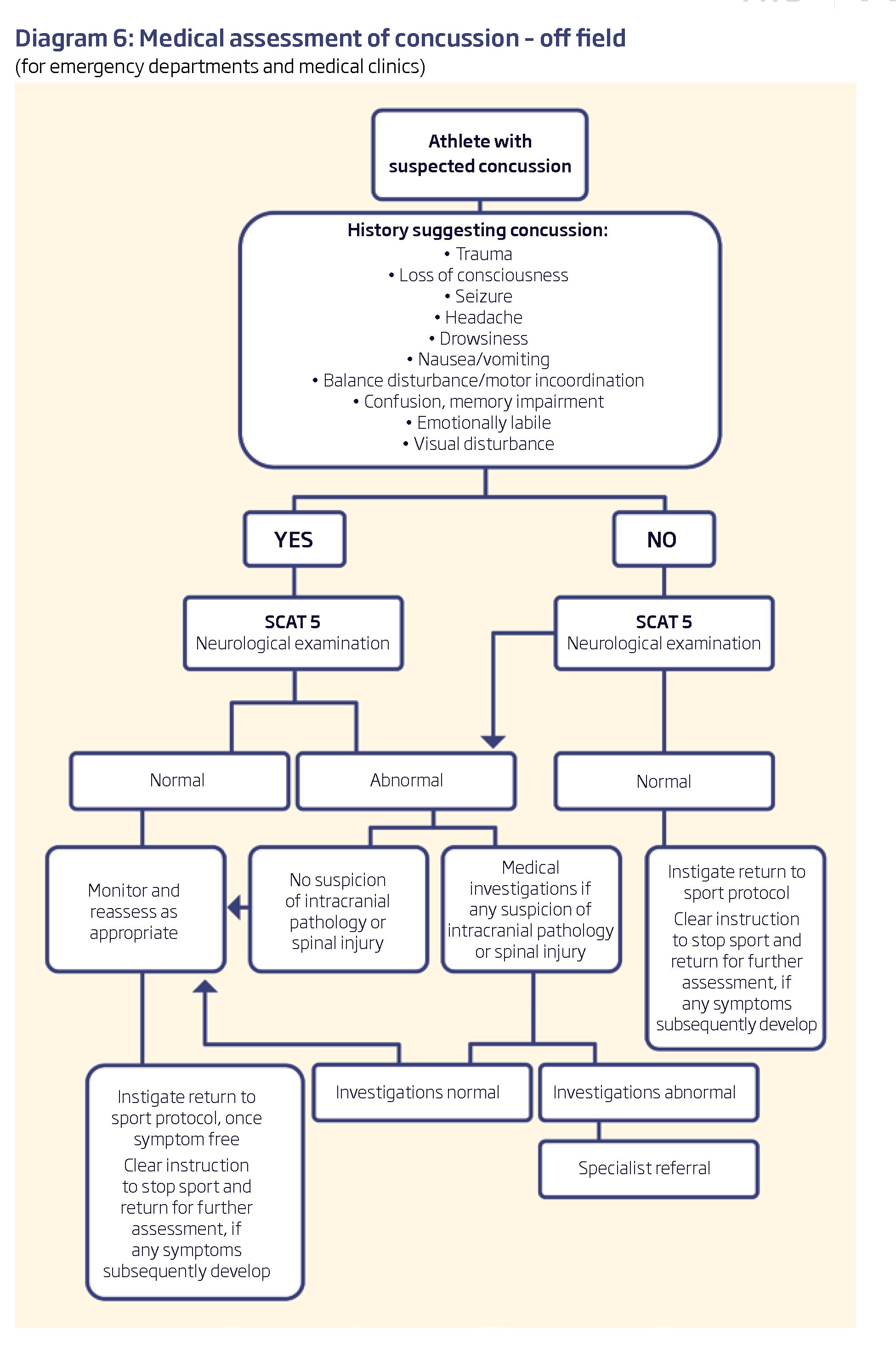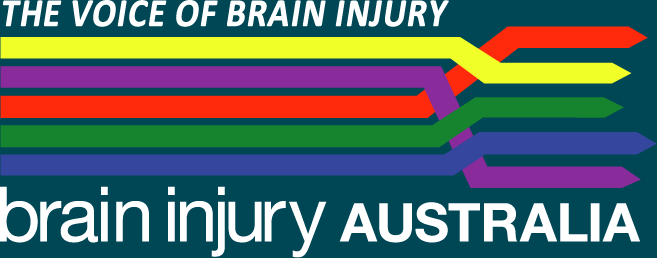On-field & Off-field assessment and diagnosis
- Introduction
- Assessment:
On field - Assessment:
Off field - Medical Assessment:
On field - Medical Assessment:
Off field
Recognising, assessing and diagnosis
Recognising mild TBI is critical to correct management and prevention of further injury.
However, the symptoms and signs are variable, non-specific and may be subtle.
Onlookers should suspect a mild TBI when an injury results in a knock to the head or body that transmits a force to the head.
A hard knock is not required, mild TBI can occur from relatively minor knocks.
There may be obvious signs of mild TBI such as loss of consciousness, brief convulsions or difficulty balancing or walking.
However, the symptoms of mild TBI can be more subtle.
There are two tools developed by the Concussion in Sport Group to help people assess whether someone has sustained a concussion (mild TBI) - see the Tabs: At the time of Injury and Following an Injury.
Medical Assessment - On field and off field
Diagnosis
The diagnosis of concussion should be made by a medical practitioner after a clinical history and examination that includes a range of domains including mechanism of injury, symptoms and signs, cognitive functioning and neurological assessment including balance testing8
